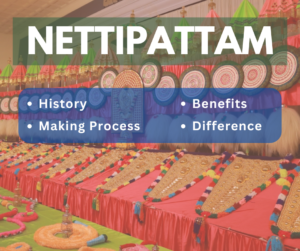Krishna Janmashtami, the joyous festival marking the birth of Lord Krishna, is celebrated with immense devotion and enthusiasm across India. In Kerala, the festival holds special significance, with vibrant rituals, prayers, and cultural performances that reflect the deep-rooted traditions of the state. This blog explores how Janmashtami is celebrated in Kerala, both in homes and temples, while highlighting the rich history and spiritual essence of the festival. Additionally, we’ll introduce you to our exquisite collection of Kerala handicrafts, perfect for adding a touch of tradition to your home decor or as gifts for your Malayalee friends and family.
The Significance of Krishna Janmashtami
Krishna Janmashtami, also known as Gokulashtami, celebrates the birth of Lord Krishna, the eighth incarnation of Lord Vishnu. According to Hindu mythology, Krishna was born in Mathura to Devaki and Vasudeva to restore dharma and rid the world of evil. His birth is celebrated with great fervor, symbolizing the triumph of good over evil. In Kerala, the festival is not just a religious event but also a cultural celebration that brings communities together in devotion and joy.
Janmashtami Celebrations in Kerala Homes
In Kerala, Janmashtami is celebrated with devotion and reverence in many homes. The day begins with cleaning the house and decorating the pooja (prayer) room with flowers, banana leaves, and oil lamps. A small idol or picture of Lord Krishna is placed on a decorated swing, symbolizing His divine presence.
- Fasting and Prayers: Devotees observe a day-long fast, breaking it only at midnight, the time when Krishna is believed to have been born. Special prayers and bhajans (devotional songs) dedicated to Lord Krishna are sung, creating a spiritually charged atmosphere.
- Preparation of Offerings: Devotees prepare a variety of traditional sweets and snacks such as unniyappam, aval nanachathu (beaten rice with jaggery and coconut), and pal payasam (sweet milk rice pudding) as offerings to Krishna. These offerings are later distributed as prasadam (consecrated food) to family members and guests.
- Rituals and Customs: Children often dress up as Krishna and Radha, adding to the festive spirit. Some families also create small kolams (designs made with rice flour) and place miniature footprints leading to the pooja room, symbolizing Krishna’s entry into the house.
Janmashtami Celebrations in Kerala Temples
Temples across Kerala, especially those dedicated to Lord Krishna, become the epicenters of Janmashtami celebrations. Among the most famous Krishna temples in Kerala are the Guruvayoor Temple, Ambalappuzha Sree Krishna Temple, and Trichambaram Sree Krishna Temple.
- Guruvayoor Temple: Known as the “Dwarka of the South,” Guruvayoor Temple is one of the most revered Krishna temples in Kerala. On Janmashtami, the temple is adorned with flowers and lights. Devotees throng the temple to offer prayers and participate in the Udayasthamana Pooja, a continuous sequence of poojas and rituals that begin early in the morning and continue until midnight. The day concludes with a grand Sree Krishna Leela (enactment of Krishna’s childhood stories) and Utsavam (temple festival procession).
- Ambalappuzha Sree Krishna Temple: Famous for its delicious palpayasam offering, this temple celebrates Janmashtami with great devotion. The temple’s deity is believed to be an infant form of Lord Krishna, and the rituals performed here on Janmashtami are deeply rooted in the ancient traditions of Kerala.
- Trichambaram Sree Krishna Temple: Located in Kannur, this temple is another prominent site for Janmashtami celebrations. The rituals here are unique, with special offerings and performances that depict the various stages of Krishna’s life.
The Historical Story Behind Krishna Janmashtami
The story of Krishna Janmashtami is rooted in Hindu mythology. According to the Bhagavata Purana, Lord Krishna was born on the eighth day (Ashtami) of the dark fortnight of the month of Shravana. His birth took place in a prison cell in Mathura, where his parents, Devaki and Vasudeva, were imprisoned by Devaki’s brother, King Kamsa. A prophecy had foretold that Kamsa would be killed by Devaki’s eighth son, which led the tyrant king to kill all of her previous children. However, when Krishna was born, the divine intervention allowed Vasudeva to escape with the newborn to Gokul, where Krishna grew up with foster parents Nanda and Yashoda. Krishna’s life and exploits are celebrated in various forms, including songs, dances, and dramas, during Janmashtami.
Explore Kerala’s Cultural Heritage with Lalitam Crafts
As you immerse yourself in the spiritual and cultural essence of Krishna Janmashtami, consider bringing a piece of Kerala’s heritage into your home. At Lalitam Crafts, we offer a stunning collection of Kerala handicrafts, including Nettipattam, Kathakali statues, Krishna statues, elephant statues, and houseboats. These handcrafted items are perfect for home decor or as thoughtful gifts for your Malayalee friends and family, allowing them to cherish the rich culture and history of Kerala.
Visit our shop page to discover a wide variety of beautiful products and order them safely. Celebrate the essence of Kerala with Lalitam Crafts and take home a piece of its enchanting culture.
Whether you celebrate Krishna Janmashtami in the comfort of your home or at one of Kerala’s majestic temples, the festival offers a profound connection to the divine and a deep sense of cultural pride. Embrace the spirit of Janmashtami and let the blessings of Lord Krishna fill your life with joy and prosperity.




